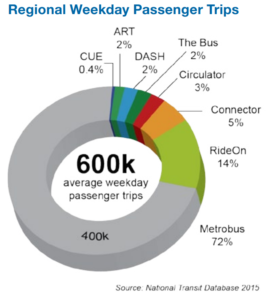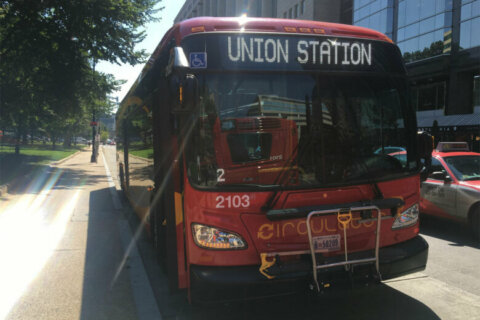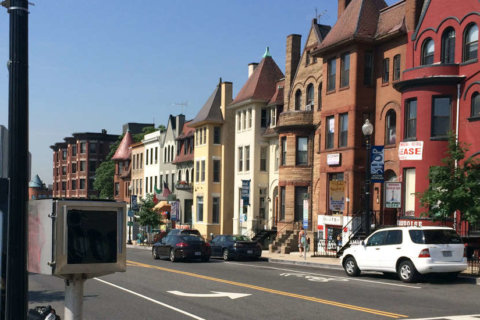WASHINGTON — Metro’s bus system overhaul could be even more far-reaching and include not just changes to current Metrobus routes, but also other transit service across the region.
A presentation on Metro’s “Bus Transformation Project” outlines a strategy meant to respond to changes from decreased ridership due to Metrorail track work to changes in where people live and work.
“Metro and the jurisdictions have studied and planned tactical, local improvements to bus services, but these ad-hoc improvements have fallen short of stabilizing or strengthening the business model for this century,” the summary document said.
Changes would be aimed at cutting costs, altering funding formulas for Metrobus service, cutting routes seen as “underused,” adding service on routes seen as crowded and potentially cutting the labor costs required to maintain and run service.
Other goals would include continued tie-in to a regional payment network like SmarTrip that could also be expanded to cover other ways of getting around, and more clearly define expectations for different types of bus routes to delineate between locally and regionally operated services.
The review must “address our sub-optimal cost structure,” the presentation said.
“This effort is an opportunity to improve services for customers, develop better ways to fund the system, create clear expectations for transit agencies and roadway operators, and transform organizations to be nimble in the face of a quickly changing landscape,” it continued.
As of 2015, about 600,000 local bus trips were taken each day on Metrobus, Montgomery County’s RideOn, Prince George’s County’s The Bus, DC Circulator, Fairfax Connector, Alexandria’s DASH, Arllington’s ART and the City of Fairfax’s CUE routes. More than 70 percent of those trips are on Metrobus. Ridership has since fallen.
“Transforming the bus system requires a unified effort by regional stewards, jurisdictional leadership, Departments of Transportation, transit providers, advocates who want transit to succeed, and the customers and businesses who rely on transit. This effort requires thoughtfulness and statesmanship as it will inevitably take on tough choices,” the presentation said.

The departments of transportation are key because for bus service to ultimately improve dramatically, it will likely require a network of dedicated bus lanes, traffic signal priority that lets buses spend less time at red lights, and fare payment changes that allow riders to pay before boarding to avoid long waits at each stop.
“Transit operators and roadway owners do not share the same incentives,” the presentation noted.
Metro has included questions about bus lanes, off board fare payments and other actual improvements to bus service in a customer survey tied to plans to ban the use of cash at fareboxes on a number of bus routes. Metro has already banned the use of cash on Route 79 over objections from a number of riders and advocates.
That survey is open until 9 a.m. Sept. 24. Metro is holding an in-person public hearing Mon., Sept. 17 at 7 p.m. on the proposal to ban the use of cash on limited-stop buses.
The broader bus overhaul is expected to take significantly longer and will be run through Metro leaders and regional transit staff.
A plan suggests a “strategy advisory panel” including transit managers, some members of the public, labor representatives and transit advocates would also be able to offer more specific input on the plan as it is developed.
A timeline on the presentation suggests a full bus funding and performance strategy could be adopted sometime next year. It could take ten years to fully implement though.
The review of bus service is required by Virginia law, after a state review pushed for cuts to bus service.







